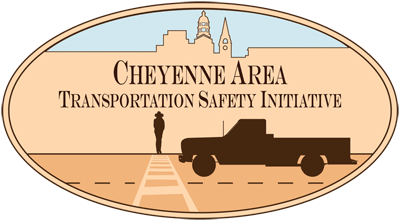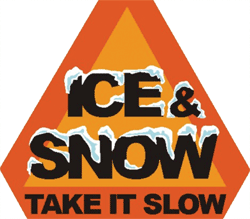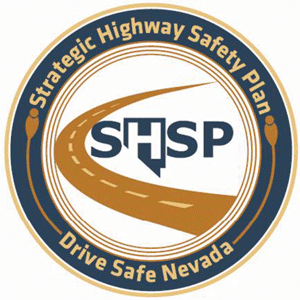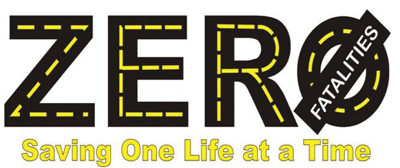In 2008, the Cheyenne Metropolitan Planning Organization (MPO) completed its first Transportation Safety Management Plan (TSMP), an MPO level plan akin to statewide SHSPs. The MPO has successfully engaged partners in developing and implementing the TSMP through a combination of activities.
As part of plan development, the MPO convened the first safety summit in the region, involving 60 stakeholders from multiple disciplines. The TSMP defined six emphasis areas requiring focus in the region: impaired driving, occupant protection, distracted driving, older drivers, younger drivers, and intersections. The plan also identified strategies in each area.
Following completion of the TSMP, the MPO developed grant applications seeking funding from the Wyoming Highway Safety Office (HSO) for two safety strategies: a summit for law enforcement personnel to increase enforcement of the secondary occupant protection statute, and development of an intersection safety analysis. These efforts maintained engagement of the law enforcement community in preparation for the summit and the engineering community as they completed the safety study. The MPO submitted a second round of grant applications to the HSO for FY 2010. Activities proposed included a briefing of state legislators on safety issues and a Battle of the Belts competition to increase safety belt use among teens.
In the fall of 2009, the MPO convened meetings of all six emphasis area teams, inviting individuals who had participated in the summit as well as new stakeholders. Each team reviewed the strategies in the TSMP, identified new ideas, and discussed implementation of the two planned efforts for FY 2010. The MPO convened a second set of team meetings in the spring of 2010. The teams developed action plans that are updated on an ongoing basis. HSO staff frequently attend events and are represented on most of the emphasis area teams.
The legislative briefing addressed issues from three of the emphasis areas and engaged a number of stakeholders in its planning. Specifically, the briefing addressed a primary safety belt law, alternative transportation to reduce DUI, and a medical advisory board. Organization of the briefing resulted in engaging a new safety stakeholder, the Wyoming Seatbelt Coalition, which helped the group frame the case for a primary safety belt law at the legislative summit. The MPO has been invited to serve as a member of the coalition, ensuring ongoing communication about the issue. A private sector company in favor of a safety belt law was engaged for the legislative briefing to present the economic benefits of increasing safety belt use through passing a primary safety belt law and demonstrate support for such a change. The American Association of Retired Persons (AARP) served as a speaker given their support of the Medical Advisory Board proposal. A public safety officer from the Casper Police Department, which started a successful alternative transportation program, also served as a speaker and became engaged in sharing information with the Cheyenne Police Department on how to start such a program.

A second effort undertaken in the community in May 2010 was Battle of the Belts, a campaign to increase the rates of safety belt use in high schools. Each school held a contest to increase safety belt use and the winning school received a cash prize. Planning this event engaged members of the younger driver and occupant protection teams. The students on the Mayor’s Youth Council became highly involved in event planning and promotion of the competition at their schools. The project allowed the MPO to develop a strong relationship with the principals of the three high schools in town. The Wyoming Safety Council became involved by delivering Alive@25 assemblies at the schools to kickoff the program. Community businesses donated prizes that were distributed to students during the week of the event to reward those students wearing safety belts. The Mayor and Police Chief presented the award to the winning school demonstrating their support of these efforts and helping to continue to build a culture of safety in Cheyenne.
Plans for FY 2011 involve developing a year-round alternative transportation program. This effort will involve the Cheyenne Regional Medical Center’s Injury Prevention Program and the Cheyenne Police Department, which is in the initial stages of configuring an alternative transportation program in Cheyenne.
Moving forward, the MPO is developing grant applications for safety projects to be conducted in FY 2012 based on ideas developed by the emphasis area teams. Smaller-scale safety efforts are also implemented on an ongoing basis, such as developing a fact sheet for law enforcement on the importance of issuing citations for violations by older drivers instead of warnings to ensure an accurate driving record is captured.
Key Accomplishments
- Engaged safety stakeholders in six emphasis areas, a law enforcement summit, a legislative briefing, and other projects.
- Implemented four major safety projects in under two years with help from new stakeholders.
Results
In Cheyenne, safety stakeholder engagement has been built and sustained through MPO leadership – identifying and funding safety projects and working with partners on project implementation. Based on the needs of each project, new safety stakeholders become engaged in the process. Stakeholder interest is sustained when partners have been involved hands-on in implementing a project and see the results. Safety belt use among high school students increased by 10 to 15 percent at each of the schools with the Battle of the Belts Program. An eight-fold increase in citations for nonuse of safety belts followed the safety belt law enforcement summit.
Contact
Sreyoshi Chakraborty
Transportation Planner
Cheyenne MPO
307-638-4384
schakraborty@cheyennecity.org




